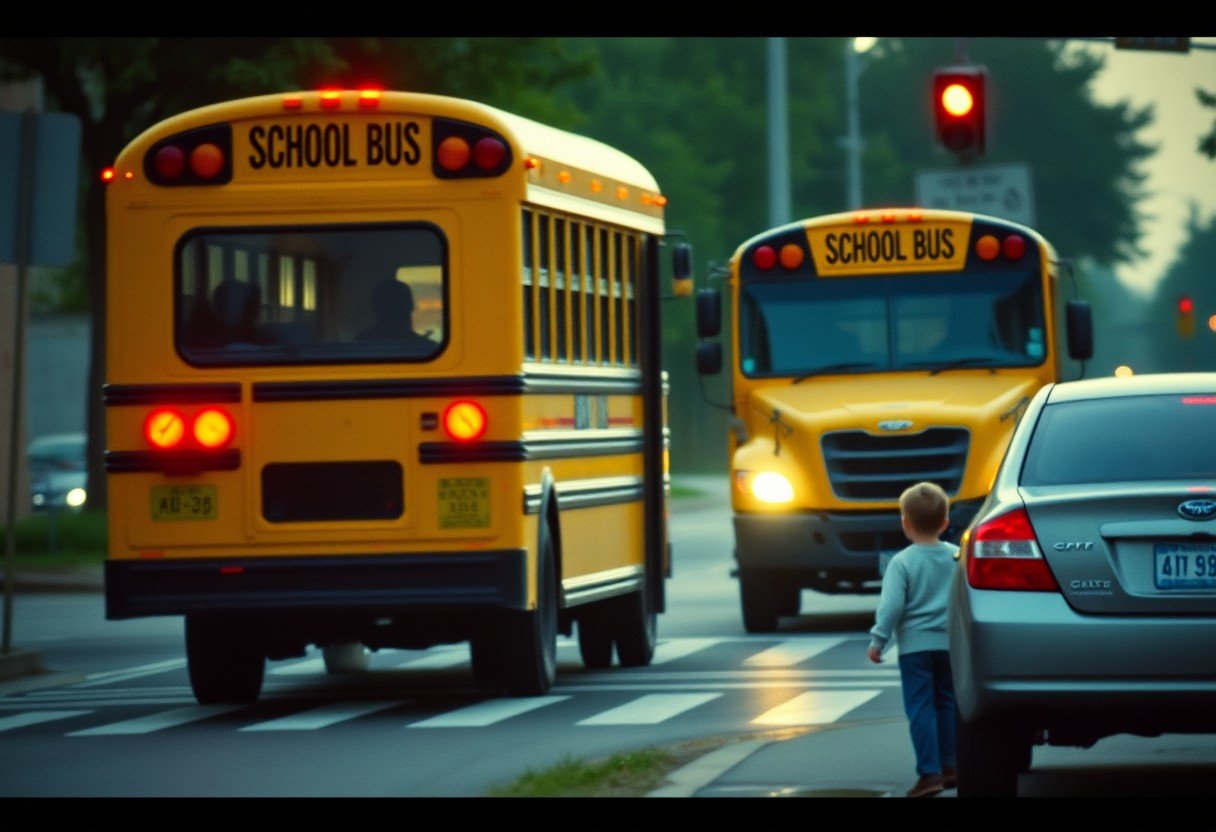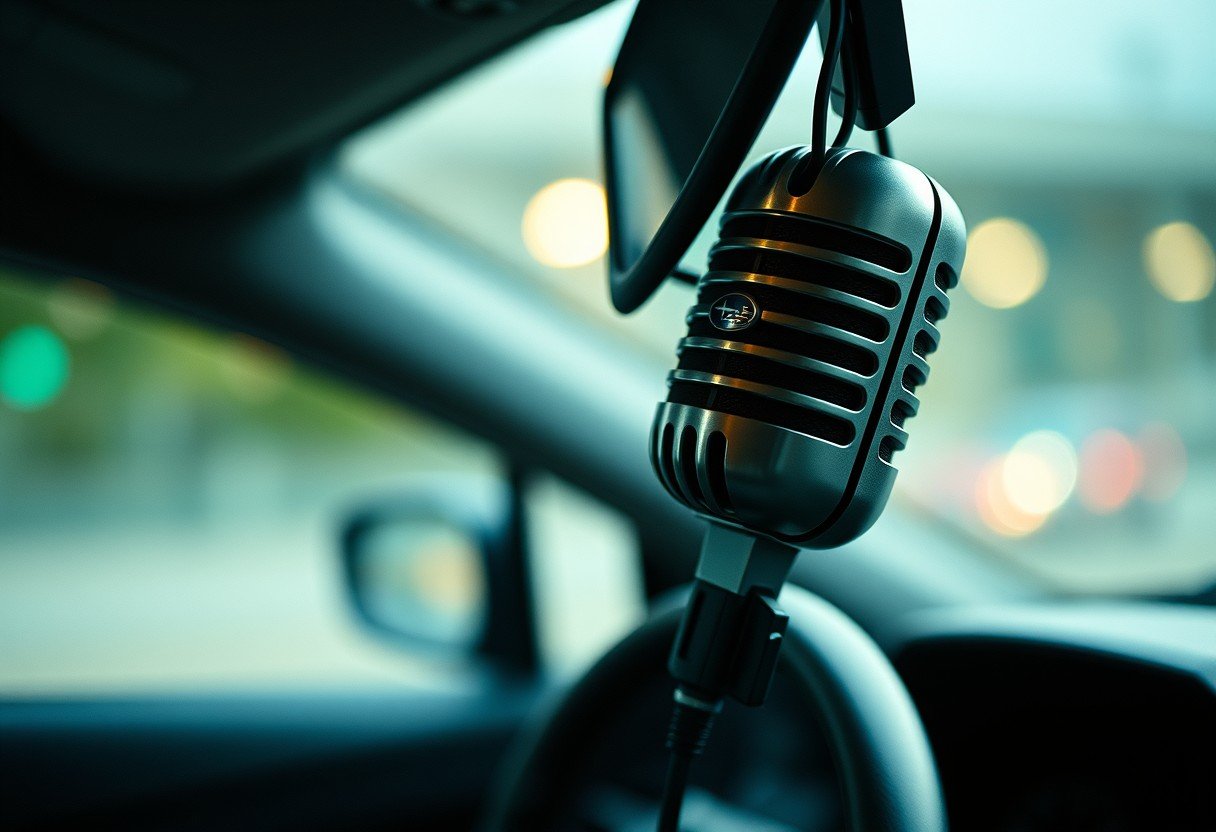Failing to stop for a school bus with flashing red lights puts children at risk and can cost you money, points, and even your license. This guide explains what the law usually requires, where the common penalties come from, how insurance is affected, and practical steps to drive safely or handle a ticket. Read on to learn clear rules and actions you can take to protect kids and your driving record.
Why You Must Stop For School Buses
School buses use flashing red lights to show children are boarding or leaving. Stopping keeps children safe as they cross the road in front of or behind the bus.
Ignoring a bus stop sign is one of the most dangerous driving mistakes near schools. Children are small and can be hard to see, and they may step into traffic without warning.
Stopping is a simple action that prevents serious injury. It also obeys state laws that aim to protect young pedestrians and bus drivers.
State Rules And Stopping Distance
Rules vary by state, but most require drivers to stop when a bus has red lights flashing and the stop arm extended. Some states treat divided highways differently, so location matters.
Typical stop distances range from 10 to 30 feet from the bus in many states. Knowing your state rules helps you avoid fines and keep children safe.
| Rule Area | Common Range | Note |
|---|---|---|
| Stop Distance | 10 To 30 Feet | Depends On State And Road Type |
| Typical Fine Range | $100 To $2,500 | Higher For Repeat Or Injury Cases |
| Driving Record Points | 2 To 6 Points | Varies By State |
Always check your state DMV or local law for exact distances and exceptions. That will tell you when you must stop on divided highways or multi lane roads.
Legal Penalties And Driving Record Impact
When you fail to stop, penalties often include fines, points on your license, and possible court appearances. Repeat offenses bring stiffer punishment.
Points stay on your record for years in many states and can lead to license suspension if you collect too many. Your driving record affects your privileges and future penalties.
In severe cases where a child is hurt, criminal charges may apply. That can mean misdemeanor or felony charges depending on harm and state law.
Impact On Insurance And Liability
A conviction for passing a stopped school bus usually raises your insurance rates because insurers see you as higher risk. Some insurers may non renew a policy after serious violations.
If you cause an accident, you may be liable for medical bills, long term care, and other damages. Lawsuits can be costly and long lasting.
Insurance and legal costs often exceed the fine from the traffic ticket. Addressing the issue early can reduce financial harm.
How To Drive Safely Near School Buses
Good habits prevent most problems. Slow down and watch for children at bus stops and crosswalks.
- Always stop when red lights flash and the stop arm is out.
- Keep a safe following distance and avoid passing a bus on either side when children are present.
- Be alert in the morning and afternoon when bus activity is highest.
Use extra caution in bad weather and low light. Children may be harder to see and buses may stop more often.
Simple care while driving near buses protects kids and keeps your record clean.
How To Fight Or Reduce A Ticket
If you are ticketed, you can consider contesting the ticket in court. Gather evidence such as dash cam footage, photos, or witness statements to support your case.
- Request the official report and any video evidence from the issuing agency.
- Prepare a clear timeline and evidence showing your view or that the bus signals were not active.
- Consider a traffic attorney if penalties are large or if the case involves injury.
Some areas allow educational programs or defensive driving courses to reduce fines or points. Completing an approved program can help limit long term effects on your driving record.
Community Role And Prevention
Neighbors and schools can make roads safer by promoting clear bus stop zones and raising awareness. Community action helps lower risky driving around schools.
Simple measures like better signage, crossing guards, and education campaigns reduce violations. Local policy changes also set clear expectations for drivers.
Working together creates safer routes for children and fewer legal problems for drivers.
Frequently Asked Questions
What Happens If I Pass A Stopped School Bus With Red Lights?
You Can Face Fines, Points On Your License, Increased Insurance Rates, And Possible Court Action. The Exact Penalty Depends On Your State And The Severity Of The Incident.
How Far Must I Stop From A School Bus?
Most States Require You To Stop Between Ten And Thirty Feet From A Bus With Flashing Red Lights. Check Your State DMV For The Exact Distance And Exceptions.
Will My Insurance Go Up After A School Bus Ticket?
Yes. Insurance Companies Often Raise Rates For Drivers With Serious Traffic Violations. A Conviction For Passing A Stopped School Bus Can Make You Appear As A Higher Risk Driver.
Can I Contest A Ticket For Not Stopping For A School Bus?
Yes. You Have The Right To Challenge The Ticket In Court. Gathering Video, Photos, Or Witness Statements Can Improve Your Chance Of Success.
Do All States Treat Divided Highways The Same For School Bus Stops?
No. Some States Do Not Require Drivers On Opposite Sides Of A Divided Highway To Stop. Others Do. Always Learn The Rules For Your State And Nearby Areas You Drive In.
What Should I Do If A Child Is Hurt By A Car Passing A Bus?
Call Emergency Services Immediately And Cooperate With First Responders. If You Are The Driver Involved, Stay At The Scene And Provide Your Information. Legal Consequences Can Be Severe If Someone Is Injured.







Leave a Comment